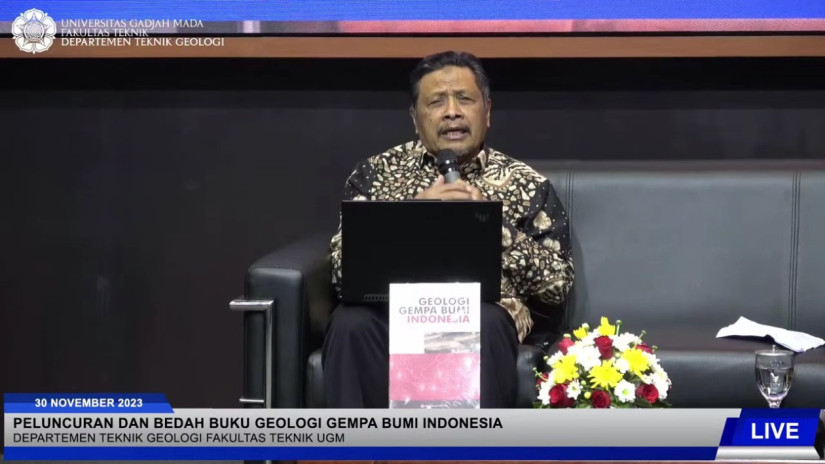
For a nation inherently vulnerable to various disasters, Indonesia grapples with a critical concern–earthquakes.
An in-depth grasp of fundamental concepts, adept management, and comprehensive disaster mitigation strategies are essential for crafting an effective emergency response system.
Addressing this need, the UGM Faculty of Engineering proudly introduced the book “Geologi Gempa Bumi Indonesia” (Indonesian Earthquake Geology) on Thursday (Nov. 30) as a robust resource for studying seismic activities.
The year 2023 witnessed hundreds of earthquakes across the archipelago, claiming lives on several occasions. Continuous advancements in early earthquake detection systems have been pivotal in swiftly disseminating potential earthquake information.
“In 2005, we could already receive early warnings within 4 minutes. Before that, it took an hour, signifying the rapid development at the Meteorology, Climatology, and Geophysics Agency (BMKG),” asserted Professor Hery Harjono from the Indonesian Institute of Sciences (LIPI).
“The collaborative efforts across departments during that time were exceptional. The strides in geological science since our initial involvement have been remarkable. Therefore, this book is an excellent resource for Indonesian geology students.”
The catastrophic earthquake in Aceh in 2004 underscored the critical need for effective disaster information governance.
Professor Harjono recounted the events, revealing that BMKG did not predict the disaster in Aceh but in Mentawai. During that period, there was no clear mapping system, let alone an early detection system.
“In 2004, we were in the dark (didn’t know anything). In 2005, I managed the Indonesian Tsunami Early Warning System (ITEWS). It was a historic moment; BMKG couldn’t provide any information. The scenario is vastly different from today,” he emphasized.
Geological science transcends a mere understanding of the physical earth; it is a discipline that chronicles all phenomena ever to unfold on the earth’s surface. Across history, the earth has weathered catastrophic disasters that have devastated life on a massive scale.
These disasters, capable of occurring at any time, continuously threaten human life. However, Professor Harjono lamented that disaster science, particularly earthquakes, has yet to receive adequate attention from the government.
Scientific knowledge development in this domain is often sidelined. Yet, the urgency of understanding and mitigating disasters is escalating, given their unpredictable nature.
“If we examine our data, the trend of earthquakes in Indonesia is on the rise. In 2007, there were 7,500 earthquakes; by 2018, the number had escalated to 11,900; it dipped to 8,264 in 2020, only to surge again to 10,792 earthquakes in 2022,” senior journalist Anif Punto Utomo revealed.
“This indicates an upward trajectory during 2017-2022. Public concern is justified. Perhaps, in the past, information dissemination wasn’t as swift, leading to fewer reports on earthquake events. However, the scenario has drastically changed, which concerns the public.”
Reflecting on the earthquake and tsunami incident in Palu in 2018, where BMKG’s predictions faced accuracy challenges, resulting in fatal consequences due to hindered evacuation processes, emphasizes the pressing need for science to prioritize community safety.
Professor Subagyo Parmumijoyo of the UGM Faculty of Engineering stressed that implementing disaster systems or mitigation requires robust political policy commitment. Funds allocated for developing disaster systems must be maximized for the community’s benefit.
The government’s role and regulatory frameworks are pivotal in determining the community safety priorities.
Author: Tasya

